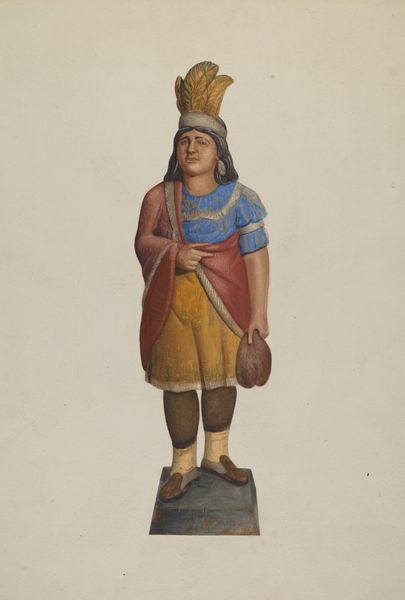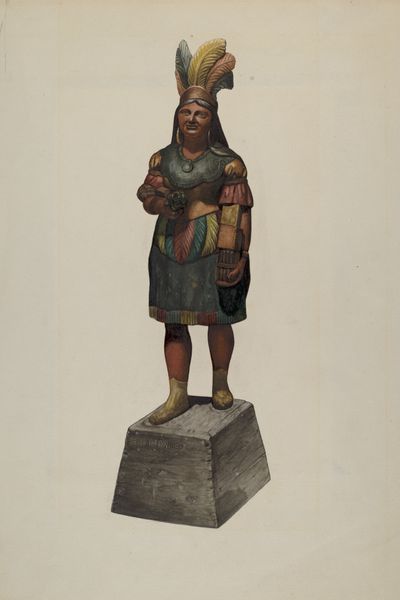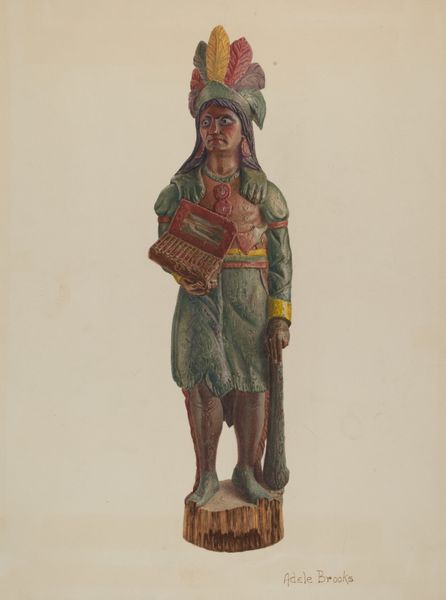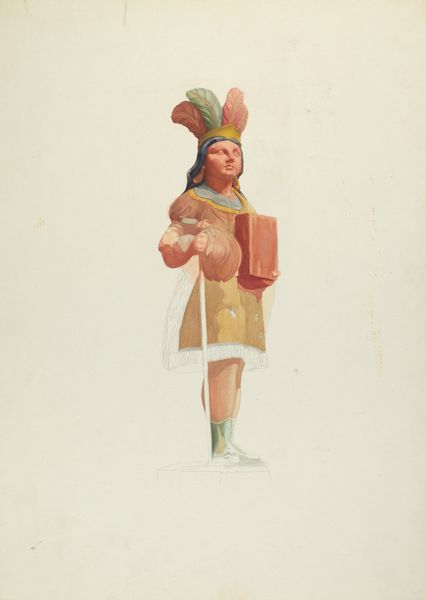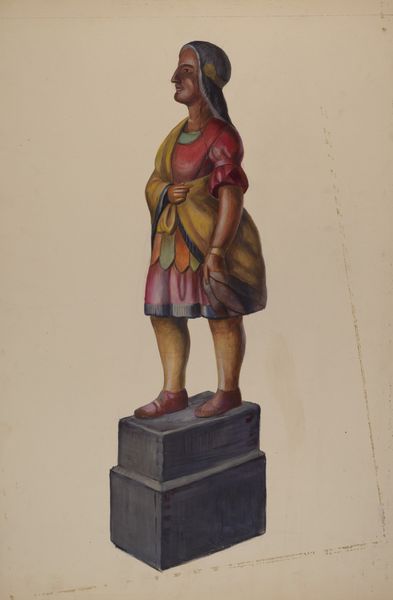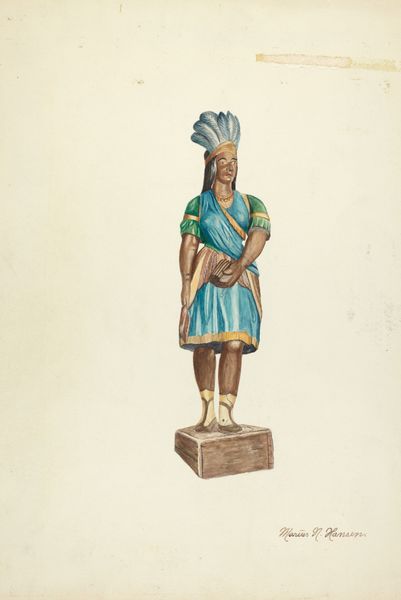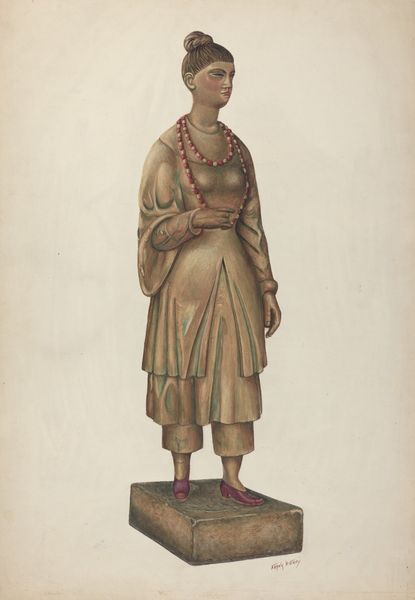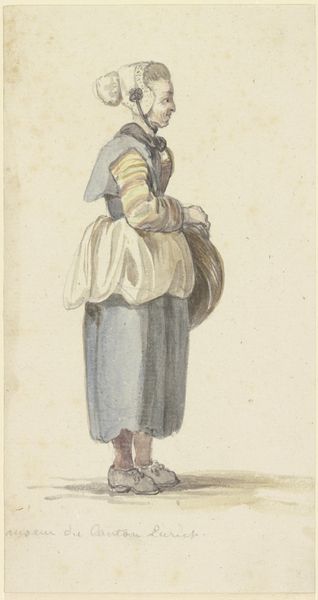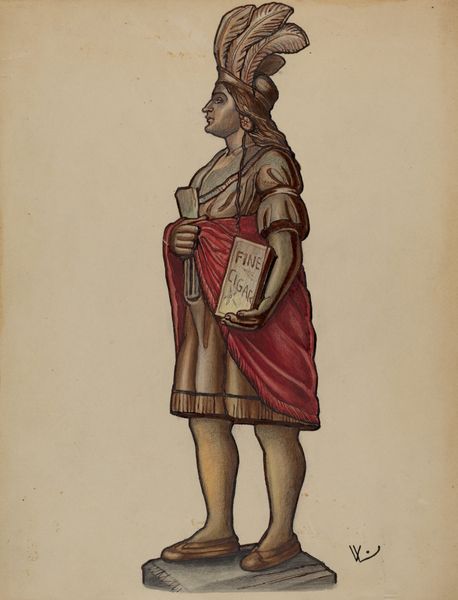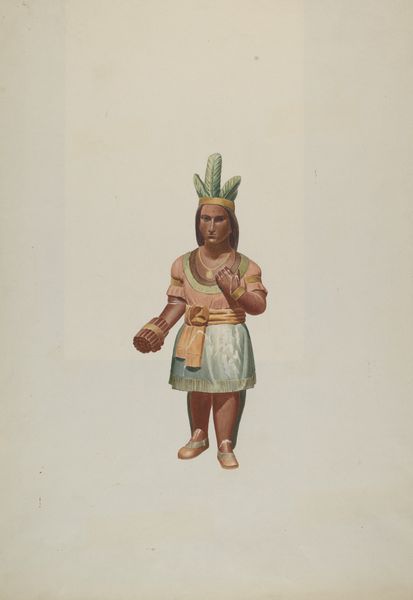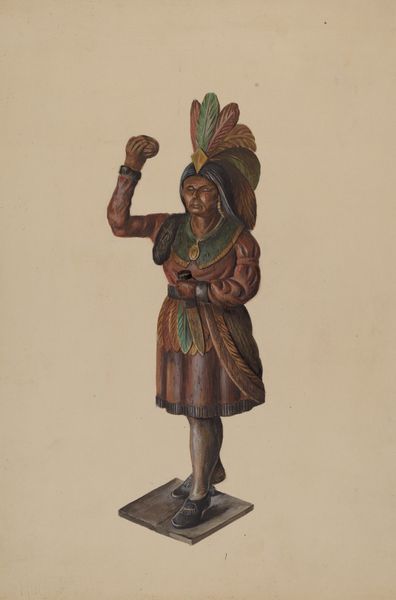
drawing, watercolor
#
portrait
#
drawing
#
caricature
#
figuration
#
watercolor
#
portrait art
#
watercolor
Dimensions: overall: 30.2 x 23.1 cm (11 7/8 x 9 1/8 in.)
Copyright: National Gallery of Art: CC0 1.0
Curator: The artwork here is entitled "Indian," created around 1940 by A. Zaidenberg. It’s a watercolor drawing and appears to depict a stereotypical figure. There is a kind of nostalgic charm to it, but the book in hand with ‘Fine Cigars’ inscribed hints at something problematic. What do you make of it? Editor: I see what you mean. The title immediately presents a challenge, being so broad, "Indian." Then seeing her standing there almost like an advertisement, what kind of narratives do you think this image participates in, consciously or not? Curator: Well, given the context of the time, it's highly likely this participates in the problematic romanticization of Indigenous peoples. Consider the "noble savage" trope common in early American and European art, positioning Indigenous people as both exotic and inherently linked to a 'simpler,' pre-modern existence. Notice how she is stylized - what visual cues are clues for the way this figure is understood by the artist and his audience? Editor: I guess her garb stands out – the feather headdress feels very stereotypical "Indian," and the "Fine Cigars" feels exploitative, using her image to sell a product, it is very commercial, erasing the individual in favor of a generalized "Indian" identity tied to consumerism. Curator: Exactly! This is where understanding the historical power dynamics is key. Whose gaze is centered here? Who profits from this image? Also, think about how widely these kinds of images circulated. Did they reinforce harmful stereotypes and impact how Indigenous people were treated and perceived in broader society? Editor: It's like this image isn't really about an individual, but rather a set of ideas _about_ a group of people, that are then commodified. That's pretty sobering to think about. Curator: Indeed. And unpacking these layers – the stereotypes, the commercialization, the underlying power imbalances – is crucial to understanding both the art and the broader cultural context in which it was created. It's about interrogating the past, recognizing its impact on the present, and fostering a more equitable future. Editor: I now appreciate how looking closely at this piece is like opening up a complex history. Thanks!
Comments
No comments
Be the first to comment and join the conversation on the ultimate creative platform.
